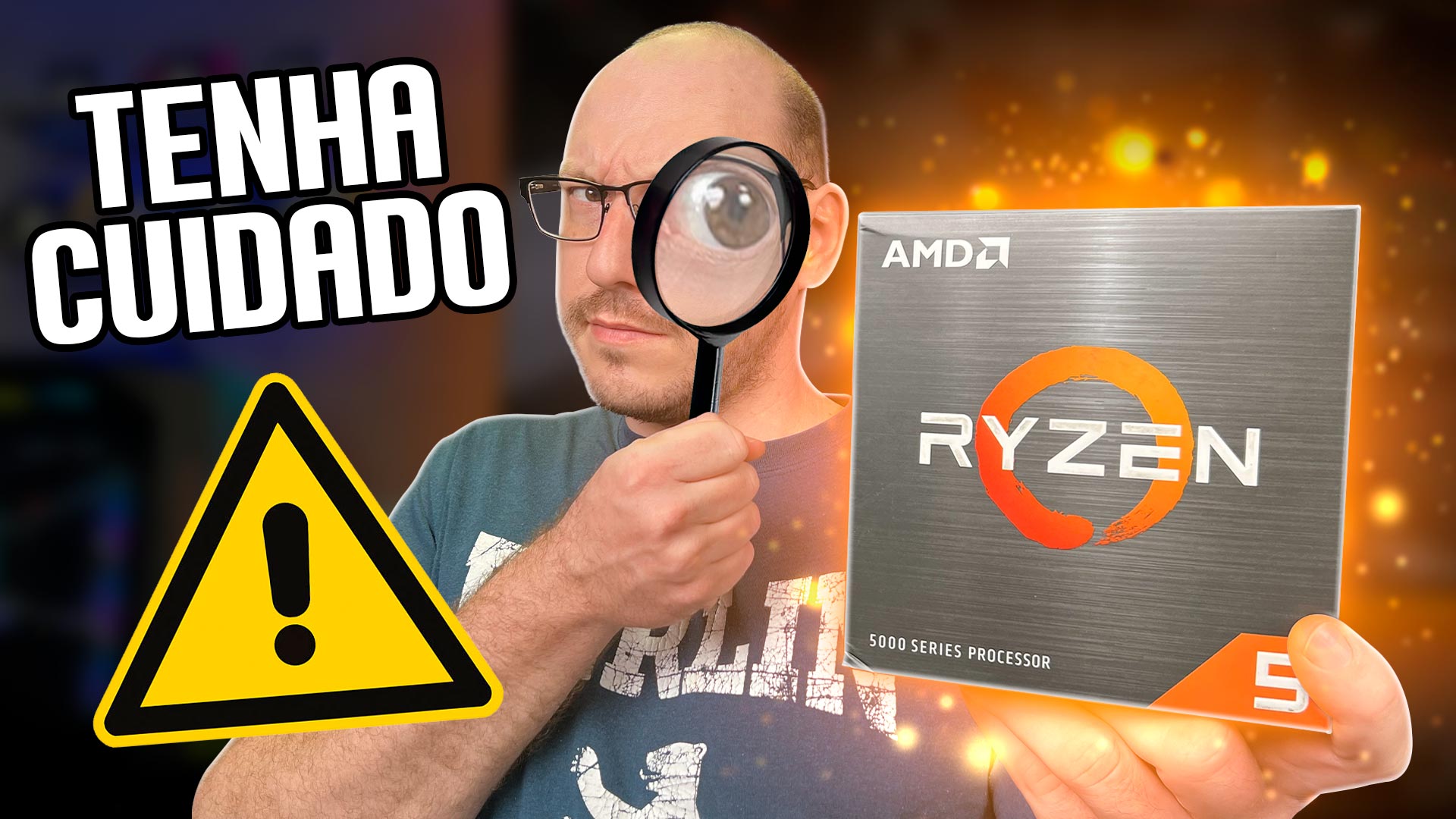
AMD processors are very present in our Adrena hardware coverage, and are even highly recommended. The Ryzen 7 7800X3D being a constant recommendation for enthusiastic gamers, the Ryzen 5 7600 for intermediaries and the Ryzen 5 5500 saving the day on the Cheap PC to play Adrena.
But the way AMD builds its product line-up, especially after a while, creates some pitfalls, and also the way we compare features and specifications can also make the consumer make wrong choices.
Today we will explain what these traps are, and how to avoid them!
O tal do cache
One point that catches a lot of people is a variation in a specification that doesn’t usually get much attention from people: the memory cache in processors. It gains the spotlight when it is expanded, as Nvidia is keen to highlight in the RTX 40 series, or AMD is very vocal about its X3D processors and its 3D Vcache.
But when it is time to highlight that there is a reduction, there is not the same effort to differentiate the product. Below we have four processors, the Ryzen 7600 and 8600G are both hexa-cores in Zen4, and the Ryzen 5600 and 5600G, both also hexa-cores but in Zen3.
Why do we have such a sharp drop between theoretically similar products? The reason is the reduction in level 3 cache. Note that the specifications are not that different between the 5600 and the 5600G, except for the cache which was reduced by half.
Because of the need to dedicate more die area to integrated graphics, the available cache area (part in purple in these diagrams) on the 5600G is much smaller than that of the 5600.

This reduction will not necessarily impact all scenarios, but when running at high frame rates, where latency is critical, it makes a big difference. This is also visible in this test with Rainbow Six Siege (where it makes a big change) and in Red Dead Redemption 2 (where it doesn’t).
Anyone who knows the Ryzen line-up is already aware of this. It is a constant feature of the 5000G and 8000G line, so the same effect happens in comparisons such as 5700G vs 5700X, or 8700G and 7700X/7700.
Those who are not in the know, however, may miss out on the performance opportunity because they think that a 5600G and 5600 are the same due to the similar name, but they are getting an integrated graphics that may not make any difference to them, and in return, losing some FPS in your games.
But there is one case that I find more complicated: variation within the line-up. The “non-X” Ryzen 5000s were introduced with models that, in practice, only slightly reduced their clocks compared to the X models. It has been like this for a few Ryzen generations, but then guys like the Ryzen 5700 appear.

It doesn’t have graphics, so it doesn’t have the G ending, but unlike the Ryzen 5 5600, which keeps the L3 cache the same as the 5600X, it only reduces clocks, the Ryzen 7 5700 has this cache reduction by half. This makes the 5700 less similar to the 5700X than the 5600 is to the Ryzen 5600X.
PCIe too
There are also some settings that go beyond cores, frequencies and even cache that are important to keep an eye on. Another configuration that can be very limited are the available PCIe slots.
The Ryzen line can bring major reductions in the availability of expansion with external cards and SSDs, and depending on the size of the reduction, this could become a big problem. This takes a lot from the Ryzen 8000G, one of AMD’s most recent releases.

The 8000G line processors already have fewer PCIe lines than the Ryzen 7000. Some of these lines are “lost” to the integrated graphics, making the 28 PCIe 5.0 lines of a Ryzen 7000 (codename Raphael) become 20 PCIe 4.0 lines on the 8000G (codename Phoenix). As they are x12 coming from the mainboard, AMD’s Phoenix only have x8 available for video cards.
Even in PCIe 3.0, operating in x8 is not usually a serious problem, the problem becomes even less relevant in PCIe 4.0, where we have good bandwidth in x8. But again there is a reduction across the line-up that can create confusion.
The Ryzen 8000G has a second structure when it comes to entry-level models. The Ryzen 5 8500G and Ryzen 3 8300G use a mix of Zen4 cores and the more compact Zen4c. This drops the number of PCIe lines from 20 to 14. In the end, there are only 4 left for a video card. The result is a large impact on available bandwidth (first graph) and potential loss of performance, especially if you are not operating on PCIe 4.0 (second graph):
I think it’s unlikely that someone on a Ryzen 8000G platform isn’t already updated to operate on PCIe 4.0, which alleviates this problem, but equally I would strongly recommend that a gamer avoid buying a Ryzen 5 8500G if they plan on purchasing a graphics card in the future.
We’ve already seen gameplay running on x4 perform better than expected in a live setting, but it’s a risky bottleneck to have on a machine, especially as games become more demanding when it comes to moving elements such as textures.
Chaos on notebooks
But perhaps the place where you need the most work when reviewing AMD processor specifications is on notebooks. AMD made a big mistake with its line-up of processors for laptops, and this is very evident in this table here:

We have three different architectures coexisting in a single generation of products. We have everything from Zen2 models (introduced 5 years ago) to the most recent Zen4 microarchitecture, with graphics ranging from Vega to RDNA3.
I don’t see any problems with using older architectures. They have a lot of potential to deliver a product with a good level of performance – still – and with the strong point of costing significantly less than the most “exciting and fresh” launches. What I find complicated is having a whole “new” family of products in which not everything is new, much less will rely on the same technology.
Source: https://www.adrenaline.com.br/videos/cuidado-na-hora-de-comprar-um-processador-amd-ryzen/


